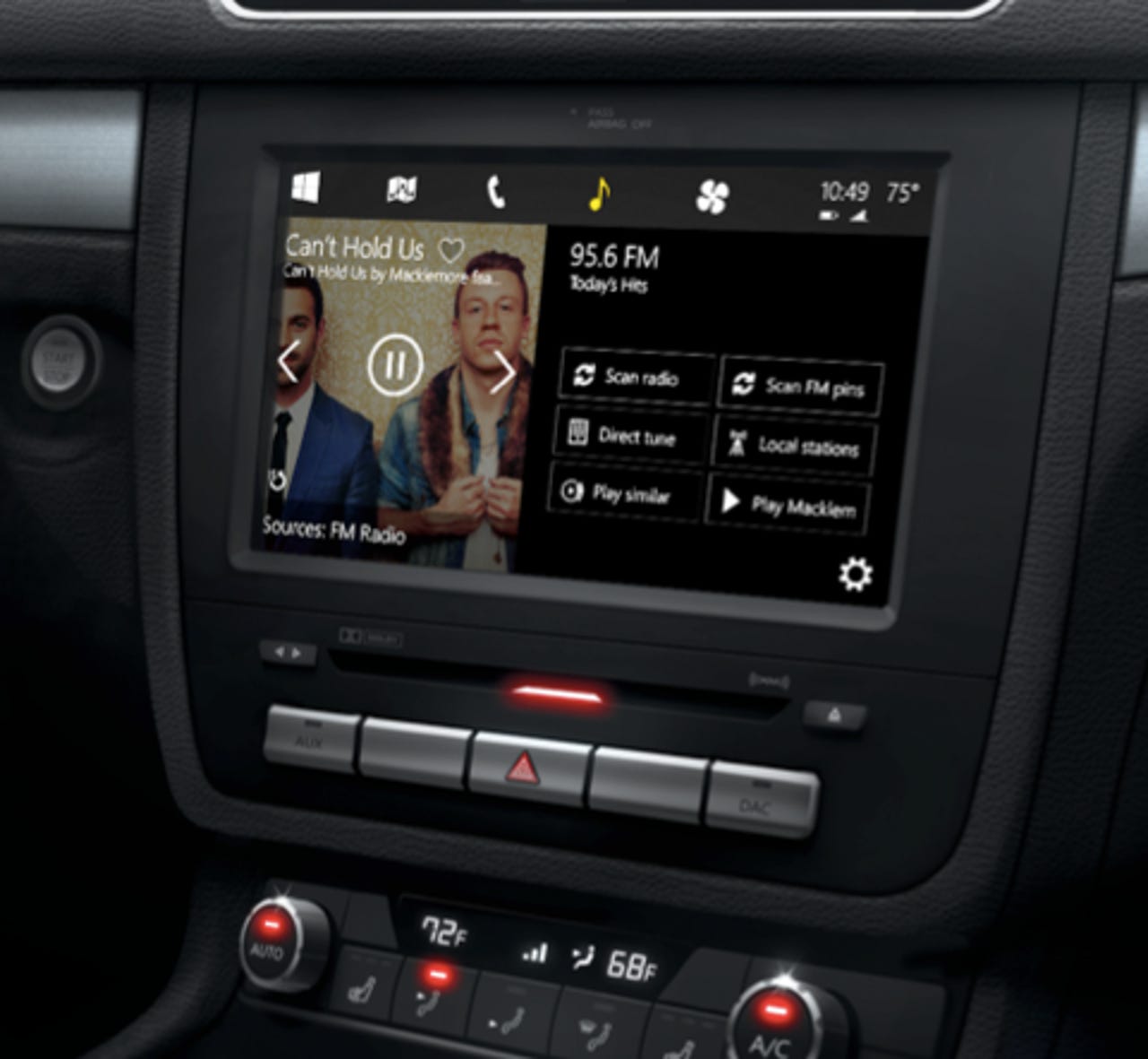Microsoft shows off 'Windows for cars' concept


Windows IVI
As ZDNet's Mary Jo Foley reported earlier, Microsoft is staffing up its Internet of Things team ahead of a bigger push into consumer products, rather than its previous focus on enterprise and industry.
Steve Teixeira, who joined Microsoft's Internet of Things team to take up that challenge, outlined a few ways Redmond will tackle Android's rise in embedded systems at last week's Build conference, as well showing off Microsoft's answer to Apple's own Siri-supported CarPlay.
Microsoft recently added Cortana to Windows Phone 8.1 and, according to Teixeira, the voice-controlled personal assistant will have a key role to play in in-vehicle infotainment systems where voice is an ideal input mode.
Teixeira's demo of a concept Windows in-vehicle dashboard at Build suggests Microsoft hasn't yet integrated Cortana with its IVI system yet, but the feature will help Microsoft overcome minimise the time a driver needs to look away from the road.
Ford, Kia, BMW, Nissan, and Fiat already use either Windows Embedded or Windows Automtotive in their vehicles, however, Teixeira noted that Microsoft had traditionally left the design of the user-experience to the automotive maker.
"The way folks have been doing this today is using Embedded as the core OS kernel upon which they would build their own user experience [and] value add. We didn't really have a point of view of what should we paint on the dashboard of the car," he noted.
Microsoft now wants Windows Phone to power IVI displays but wants to do more than "blasting the phone UI to the dashboard", Teixeira said. By contast, Apple's CarPlay connects an iPhone to the car through a Lightning cable, using a connection based on a streaming H.264 video feed that returns user input from the touchscreen.
"We're going to create a world where I can bring my Windows device into my vehicle," said Teixeira, adding that the "predominant" standard it will use to do so (though there are more than one) is Mirrorlink, which Nokia was an early supporter of.
Tiles, pins and the Start page
The IVI dashboard concept demoed at Build uses Windows' 'Tiles', and would allows the user to pin common tasks to the UI.
The Start page also includes basic safety information, such as speed limits.
The user can switch between different views, for example, between navigation or "now playing" for music.
My apps
Microsoft has added a blip and swoosh sound when flicking between viewing modes. It's just a demo, but Microsoft is hoping existing Windows Phone music and content services will make their way across to the car in time.
Microsoft hopes developers will also see the need to build apps with "safe driver mode UI standards" for cars that are in motion.
Making calls
Microsoft would also employ tiles to let drivers glance at their contact list to make a call.
Messages
The concept IVI platform offers the driver the option to have voice and social messages read out aloud.
Browsing through communications
The dashboard would feature a central hub, where drivers could select which communications mode they want to enter including messages, social, email, favourite contacts, and groups.
Xbox radio
The platform also allows the driver to select from sources that are native to the vehicle, such as FM and AM radio, third-party apps and Microsoft's own Xbox radio.
Pulling content from the smartphone
The other option is to draw on music stored on a driver's Windows Phone device paired with the IVI system.